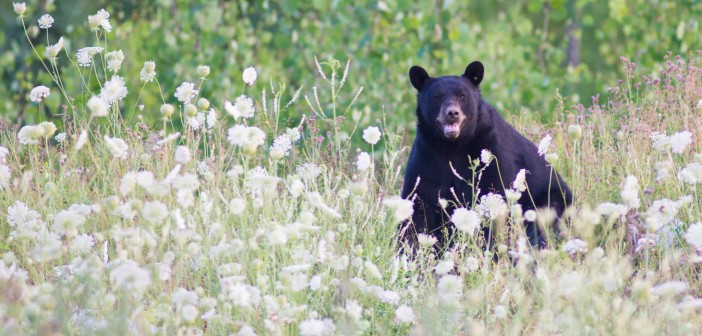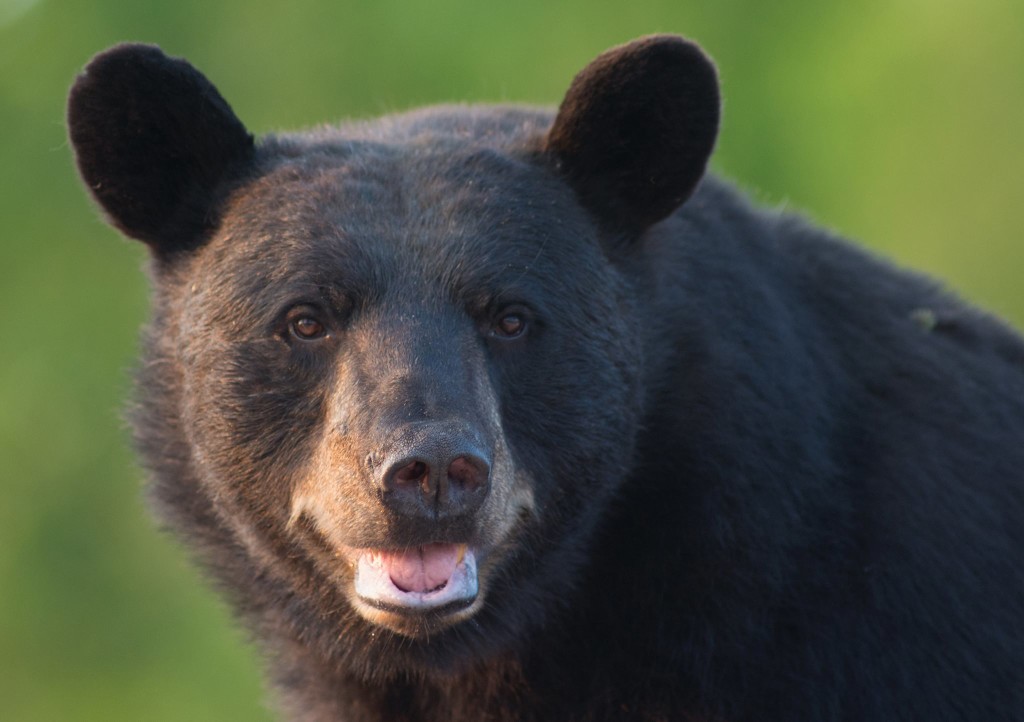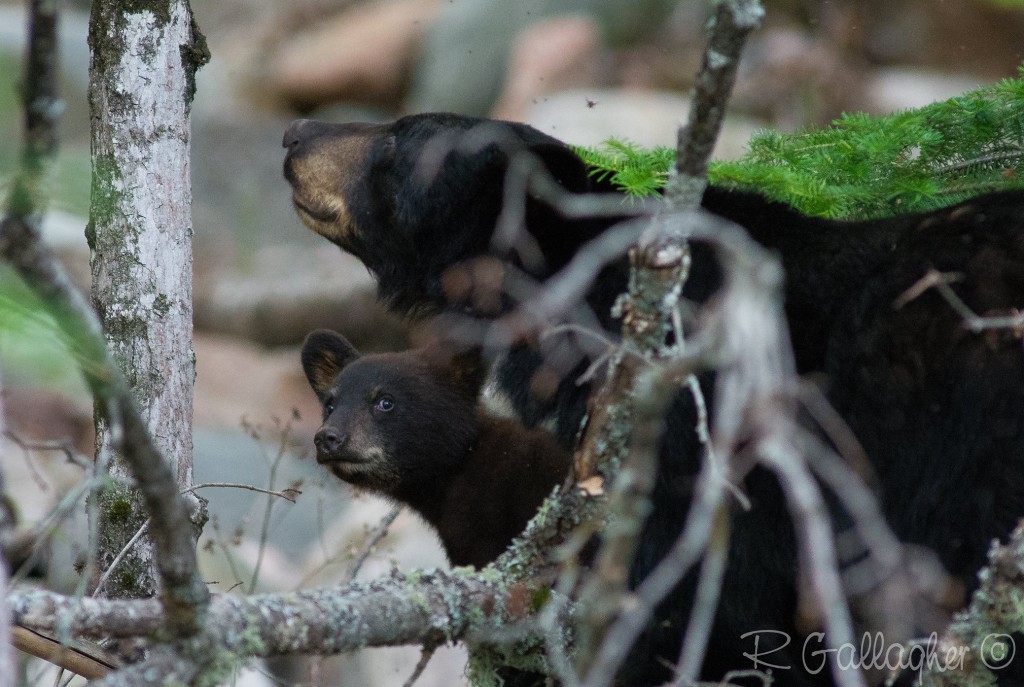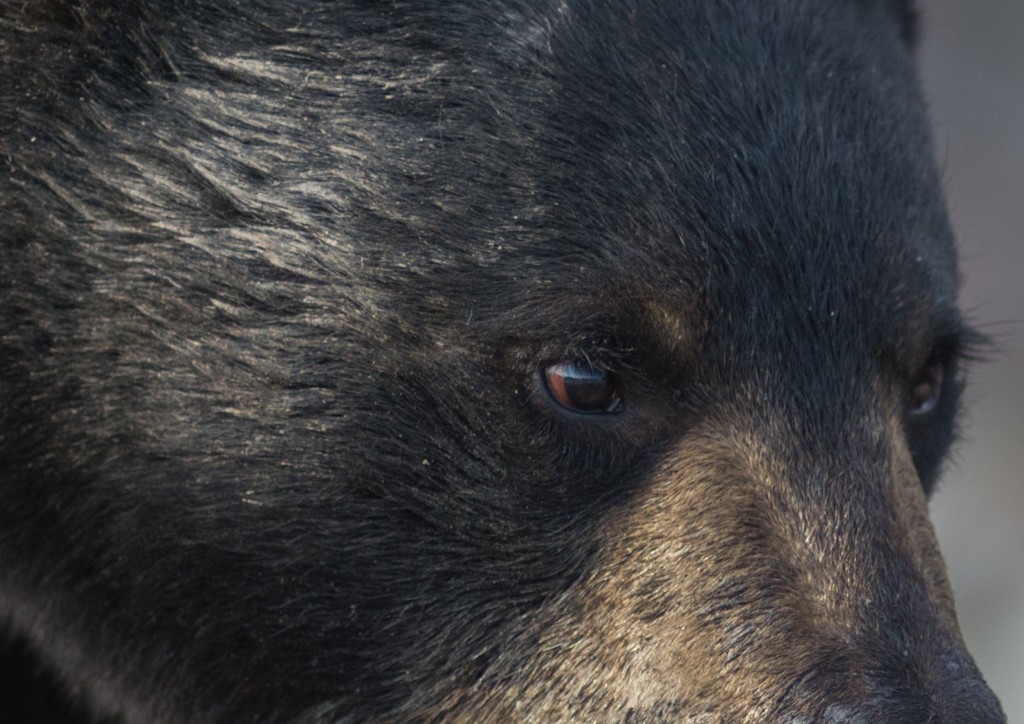Does the reinstatement of the spring bear hunt have an effect upon bear-human conflict? It’s an old, heated argument and one that science has yet to resolve.
In November 2013, the Ontario Ministry of Natural Resources and Forestry (MNRF) announced a spring bear hunt pilot project as a way to “enhance public safety and mitigate bear-human conflicts in Northern Ontario. The two year program focused on 8 wildlife management units (WMU) throughout 5 of the largest urban population centres in Northern Ontario that included North Bay, Sudbury, Timmins, Sault Ste. Marie and Thunder Bay. In October of 2015, the province announced the 5 year expansion of the project that would encompass all 88 Wildlife Management Units across Ontario that currently host a fall bear hunt.
Under the extended pilot the harvesting of cubs and female bears accompanied by cubs remains illegal. Throughout most WMU’s only one bear per year will be allowed per hunter for harvest.
The expansion of the spring bear hunt pilot will now allow opportunities for non-resident hunters to pick up bear tags to hunt in Ontario. Of this amendment supporters anticipate an economic boost for the tourism industry in Northern Ontario.
Those opposed to the reinstatement of the hunt question the economics and the ethics of hunting during the spring when sows are raising cubs and disparage the practice of baiting and waiting in a blind. Opponents also emphasize that the spring bear hunt will not decrease the number of bear-human conflict.
Jim Johnston, Bear Wise Elliot Lake, was a hunter of moose and small game for over three decades. He retired his Ontario Federation of Anglers and Hunters (OFAH) membership stating a conflict with their communication practice.
Of the reinstatement of the spring bear hunt Johnston stated, “It absolutely won’t address public safety issues. There’s two driving forces that creates nuisance bear activity. One is crop failure of natural food supplies outside the community. And the second is the amount of available food inside the community- natural food or other food that is non-natural like garbage, bird feeders, composters and restaurant dumpsters.”
Mark Ryckman is a wildlife biologist with OFAH. On the matter of nuisance bear activity Ryckman stated, “As human settlements continue to encroach on black bear habitat, we can expect a certain level of human-bear conflict – there is no single tool that will eliminate human-bear conflicts, aside from completely eliminating bears or humans. We need to think about it as managing two bear populations, rural bears and the bears that live close to human settlements. Different tools are required for proper management of these two bear populations. Regulated bear hunting, including a spring bear hunt, is one tool that can contribute to reduced conflicts by maintaining bear populations at a socially-acceptable level and selectively removing the types of bears that are responsible for most conflict immediately prior to the peak conflict period. Education and communication are important for reducing attractants, but human nature dictates that we will never achieve 100% compliance and therefore never eliminate bear problems. A suite of tools are required for proper bear management.”
Data collected during the first 2 year stage of the spring bear hunt pilot was not sufficient to conclude whether or not the hunt had any effect upon bear-human interactions. Heather Pridham, Issues Management Coordinator MNRF, explained there is much work required to determine what, if any, impact the spring hunt would have upon such collisions. Pridham notes that of the thousands of bear calls received by the province each year it is impossible to know how many calls come in on the same bear and that not all calls are to report nuisance activity- callers are often reporting merely a sighting of a bear.
What can be tracked with greater certainty is the number of bear attacks and fatalities. According to the MNRF, between 2005- 2015 there has been 1 fatality resulting from a black bear attack in Ontario. Within the same time frame there have been 15 reports of serious injury by black bear attacks in Ontario.
“There are a lot of myths about bears and that’s something that we try to correct,” shared Johnston. “Most black bears, even mothers with cubs, aren’t that dangerous.”
Johnston’s articulated his concern that with the expansion of the spring hunt to 88 WMU’s that there is little time upon the landscape that black bears are not under the gun- or bow. “When they cancelled the spring bear hunt in ’99 they increased the fall hunt dramatically. Hunters start hunting bear in mid-August now. When the cubs come out of the den they are being hunted and if they survive the spring hunt they’re being hunted when they try to make their way back into the den in the fall.”
There has been controversy regarding the number of cubs orphaned each year. Responding to estimates of 1,000 to 2,000 orphaning of cubs put forward by groups that opposed the spring bear hunt, the MNR configured a number based on extreme possibility of orphaning if criteria’s were not in place to control the hunting of sows. Assuming that no legislation existed and nursing females were as vulnerable to the hunt as other females it was estimated by MNRF that the greatest number of cubs that could be orphaned was 274 during a spring bear hunt.
“Most people heard that number and they didn’t understand where it came from. Anti-hunters used that number and it became this very ubiquitous and prolific thing that was based on misinformation. The MNR had to issue another press release to explain that the information was being misinterpreted. By their best estimates the number of bear cubs orphaned are a couple of dozen. I don’t want to make light but accidents do happen.”
Johnston disagrees with MNR’s recent estimates and is concerned that hunters are not always able to distinguish the ambiguous differences between male and female bears- particularly lactating female bears. “And a mother will often hide her cubs before she enters a clearing to approach baited hunting sites,” stated Johnston.
The penalty for shooting a lactating sow are pretty steep. Under the Criminal Code of Canada, offenders could be fined up to $25,000 for harvesting a mother with cubs.
“It’s a hefty penalty and hunters agree with it. We have very strict wildlife laws in place to protect our resources,” stated Ryckman. “Hunters aren’t immune to loving animals. We just use them in a different way. No ethical or legal hunters would want to orphan or shoot a bear cub.”
Ryckman defends the spring bear hunt as an appropriate wildlife management tool. “There are no natural predators of bears. So it can be expected that the bear population would increase to the point where the social acceptance of that species declines dramatically. That’s what we have seen lately and that’s why the government initiated this pilot project. Also, if the bear population became too dense they could begin dying of starvation and disease. Even anti-hunters wouldn’t want to see a population increase to the point that it wipes them out in a gruesome manner. In our minds it’s much better to maintain a species at equilibrium with the landscape and habitat to support it.”
Those that support the spring hunt and neutral parties hold that the economic gain to a struggling Northern economy is a worthy argument. In 1999, estimates suggest that the spring bear hunt generated $43 million back into Ontario’s economy. A report released in August 2015 by the Northern Policy Institute estimates that annual black bear hunting licenses raised 1.8 million for the MNR in 2012-2013. The report estimates that hunters from Ontario only can inject as much as $9 million into the provincial economy and tourists –another 18 million.
Johnston disagrees with the hopeful estimates. “They are saying that the spring hunt is going to be a huge economic driver for the North and that’s not true. Everything has changed since the spring hunt was cancelled in 1999.”
Owing to an American economic crisis in 2008, new passport requirements –which only 1/3 of Americans possess, and a dramatically reduced American dollar, Johnston opines that attracting hunters across the border will be a futile effort. As well, Johnston believes that grants received by tourist outfitters back when the spring hunt was cancelled in ’99 to revamp their businesses will not be so eager to restructure their businesses once again, this time to cater to potential bear hunters.
According to Ryckman the spring bear hunt revival isn’t just about economics, it is about history, recreation and providing wild meat for the table.
“The primary driver for any sort of recreational hunting is food. There are ancillary benefits –being out in nature and the feeling of pride in a successful hunt,” commented Ryckman. “The spring bear hunt has a long history in Canada and it’s a heritage worth protecting in our minds.”
(feature image provided by Ron Gallagher)






1 Comment
Wish they would stop with the word “harvesting” FFS. YOU DON”T HARVEST ANIMALS!!!!